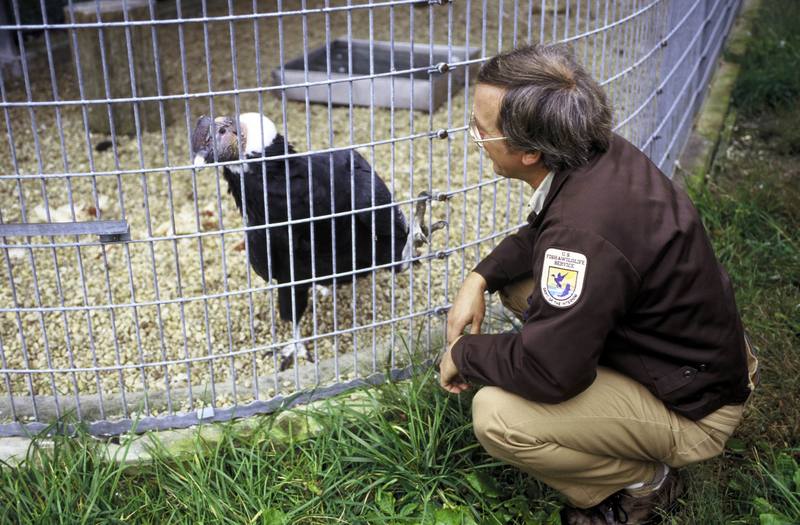California condor (Gymnogyps californianus) {!--캘리포니아콘도르--> From the U.S. Fish and Wildlife Service's online digital media library.
Check http://images.fws.gov/ for higher quality version.
Metadata
Title: FWS Biologist with Condor
Alternative Title: (none)
Creator: Hollingsworth, John and Karen
Source: WV-7676-Working for Wildlife
Publisher: U.S. Fish and Wildlife Service
Contributor: NATIONAL CONSERVATION TRAINING CENTER-PUBLICATIONS AND TRAINING MATERIALS
Language: EN - ENGLISH
Rights: (public domain)
Audience: (general)
Subject: FWS Biologist, FWS Employee, endangered species, Patuxent Research Refuge, Maryland
Description Abstract: A FWS biologist is observing a condor in captivity at the Patuxent Research Refuge. The California condor is one of the largest flying birds in the world, with a wing span of more than nine feet. Condors can soar and glide for hours without beating their wings. After rising thousands of feet overhead on air currents, California condors will glide long distances, sometimes at more than 55 miles per hour searching for dead animals, like deer or cattle. California condors lived for thousands of years in many parts of North America. As people settled the west, they often shot, poisoned, captured, and disturbed the condors, collected their eggs, and reduced their food supply of antelope, elk, and other large wild animals. Eventually, condors could no longer survive in most places. The remaining individuals were limited to the mountainous parts of southern California By 1979, there were 25 to 35 condors in the wild and one in captivity. In 1987, the last wild condor was removed from the wild, and all 27 condors left in the world were being kept in two zoos. Successful captive breeding programs have shown promise for the future of the condor population.
Date Issued: October 22 2002
